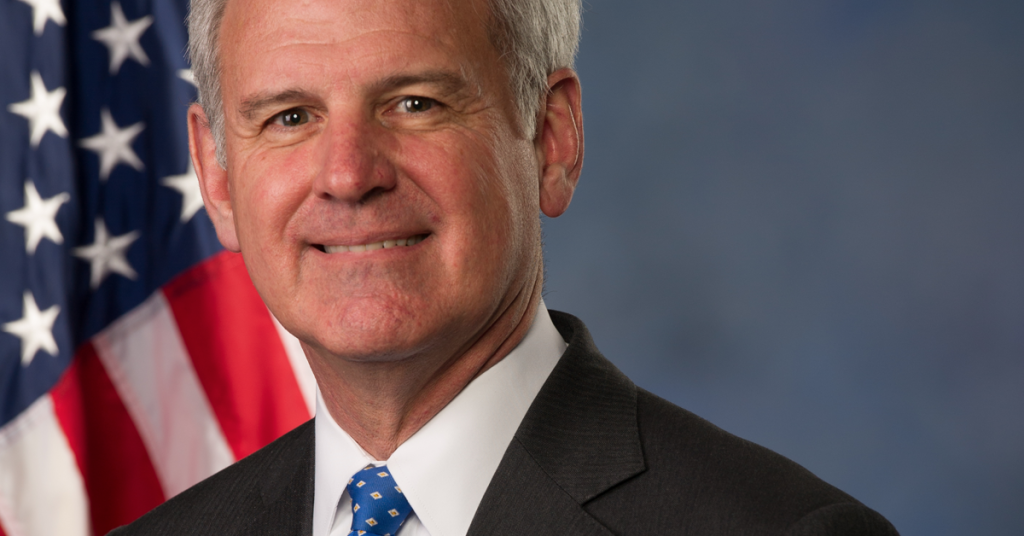Donald Trump announces plans for Pentagon to create ‘Space Force’

Vowing to reclaim U.S. leadership in space, President Donald Trump announced Monday he is directing the Pentagon to create a new “Space Force” as an independent service branch aimed at ensuring American supremacy in space. Trump envisioned a bright future for the U.S. space program, pledging to revive the country’s flagging efforts, return to the moon and eventually send a manned mission that would reach Mars. The president framed space as a national security issue, saying he does not want “China and Russia and other countries leading us.” “My administration is reclaiming America’s heritage as the world’s greatest spacefaring nation,” Trump said in the East Room, joined by members of his space council. “The essence of the American character is to explore new horizons and to tame new frontiers.” Trump had previously suggested the possibility of creating a space unit that would include portions equivalent to parts of the Air Force, Army and Navy. But his directive will task the Defense Department to begin the process of establishing the ‘Space Force’ as the sixth branch of the U.S. armed forces. He said the new branch’s creation will be overseen by Gen. Joseph Dunford, the chairman of the Joint Chiefs of Staff. “When it comes to defending America, it is not enough to merely have an American presence in space. We must have American dominance in space,” Trump said. He added: “We are going to have the Air Force and we are going to have the Space Force, separate but equal.” The president also used the White House event to establish a new policy for reducing satellite clutter in space. The policy calls for providing a safe and secure environment up in orbit, as satellite traffic increases. It also sets up new guidelines for satellite design and operation, to avoid collisions and spacecraft breakups. Trump was joined by Vice President Mike Pence, who leads the recently revived space council, and several Cabinet members, NASA Administrator Jim Bridenstine, retired astronauts and scientists. The council’s executive secretary, Scott Pace, told reporters before the meeting that space is becoming increasingly congested and current guidelines are inadequate to address the challenge. Republished with the permission of the Associated Press.
Women of Influence: U.S. Space and Rocket Center CEO Dr. Deborah Barnhart

Huntsville, Ala. native Dr. Deborah Barnhart has been working on and off with the U.S. Space and Rocket Center in Huntsville for over 40 years. Her career has taken many different twists and turns, but she finally “landed” at her home base in January of 2011. Barnhart graduated from the University of Alabama in Huntsville in 1973; while she was finishing her senior year she worked in the public affairs and marketing offices at the U.S. Space & Rocket Center. A few years after graduation she came back on staff at the space center managing publicity for the museum’s newest addition — the Space Shuttle. At the age of 27, Barnhart decided to switch gears and joined the U.S. Navy, hoping to work with satellites. However, the Navy had other plans for her. She attended Officers Candidate Schoo (OCS)l, and after graduating at the top of a class of 500 people, was given the opportunity to become one of the first ten women ever to serve on a Navy sea vessel. And she took it. “I was the seventh woman to be certified to fight on and drive Navy vessels,” she told Kari Hawkins in an interview. “I drove ships on the west coast and the east coast. I loved the Navy, and the ability to see the world as a finite place. I’ve heard it said that everyone joins the military to get away from something, to ‘get out of Dodge.’ And maybe I did want to get out of Dodge, but I also joined the military to go toward something, to pursue an interest and an opportunity.” Barnhart commanded five units, experienced submarines, Navy air and space aspects, and missile defense systems throughout her 26 year military career. When she went into the Navy Reserves, she found her way back to the U.S. Space & Rocket Center for the third time in her career, this time serving as the director of Space Camp and the Space Academy. During this time she had two children and obtained a M.B.A. from the University of Maryland College Park. In 1990 Barnhart left the Space Center for the third time to pursue work in the private sector. That same year she received a doctorate degree in education from Vanderbilt University. After leaving the space center, she became vice president of Hamilton Sundstrand Space, Sea Systems International, and Honeywell Space and Defense, and reached a lifelong goal: working with satellites. She also acquired another M.B.A., this one from the Massachusetts Institute of Technology where she was a Sloan Fellow in 1998. She had retired from her long accomplished career when the Space Center contacted her in 2010, convincing her to return to the center for the fourth time, but this time to the helm of the “ship,” as Executive Director and CEO, a position she has held since January of 2011. The first year she served as CEO, Barnhart reduced the Space Center’s debt by $1 million, and brought attendance up by 13 percent after 10 years of decline. In 2017, the center had it’s all-time record attendance, with an 11 percent increase in revenue. “In everything that we do, we want to inspire that next generation of explorers,” Barnhart told Hawkins in an interview. Barnhart has received a lot of honors during her lengthy career. She is a recipient of NASA’s Distinguished Public Service Medal, the highest form of recognition awarded by NASA to a non‐government individual. A member of the Board of Managers of the Air Force Museum Foundation and a Trustee on the Board of the University of Alabama in Huntsville Foundation. She also served as Governor Robert Bentley’s appointee to the Alabama Space Authority Task Force. In October of 2017 Barnhart was inducted into the Alabama Academy of Honor alongside Governor Kay Ivey, and two other women, making her part of the first class of all female inductees. For over 20 years of service to our Nation through the Navy, her service to the state of Alabama through the U.S. Space and Rocket Center, and for setting the level of excellence the nation has come to expect from Alabama Women, Dr. Deborah Barnhart is absolutely and Alabama woman of Influence.
After 2 months, Jim Mattis is only Donald Trump pick at Pentagon

Jim Mattis is not lonely in the Pentagon, but two months into his tenure as secretary of defense not a single political appointee has joined him. The retired Marine general, who took office just hours after President Donald Trump was sworn in, has sparred with the White House over choices for high-priority civilian positions that, while rarely visible to the public, are key to developing and implementing defense policy at home and abroad. When the Obama administration closed shop in January, only one of its top-tier Pentagon political appointees stayed in place — Robert Work, the deputy defense secretary. He agreed to remain until his successor is sworn in. So far, no nominee for deputy has been announced, let alone confirmed by the Senate. The administration has announced four nominees for senior Pentagon civilian jobs, and two of those later withdrew. Trump’s nominee to lead the Army, Vincent Viola, withdrew in early February because of financial entanglements, and about three weeks later Philip B. Bilden, the Navy secretary nominee, withdrew for similar reasons. On Tuesday, the White House announced it intends to nominate John J. Sullivan to be the Pentagon’s chief lawyer. In January, Trump announced former congresswoman Heather Wilson of New Mexico as his nominee to be Air Force secretary, but he has not submitted the nomination to the Senate. “The process has definitely slowed,” said Dov Zakheim, who served as the Pentagon budget chief during the George W. Bush administration. He said he would be surprised if Mattis gets any senior appointees confirmed before mid-April. “The delays are already causing much consternation among allies, especially in Europe and Southeast Asia, as their most senior working level day-to-day contacts – the deputy assistant secretaries — may not come onboard until the summer,” Zakheim said in an email exchange. “Lots of mayhem could take place before then.” This is not an issue at the Pentagon alone. While most of Trump’s choices for Cabinet and Cabinet-level posts have won Senate confirmation, 500-plus government-wide sub-Cabinet level positions requiring Senate confirmation remain unfilled. There are few visible signs that the absence of Trump appointments in the Pentagon has affected its management of the counter-Islamic State campaign or military operations in Afghanistan. But the president has ordered a number of major policy reviews that require senior-level Pentagon attention, including counter-IS strategy, nuclear and missile defense plans and a blueprint for building up and improving the combat-readiness of the military. Even Republicans are taking note. Rep. Mac Thornberry, chairman of the House Armed Services Committee, said at a hearing Wednesday that when lawmakers have nuclear policy questions, “we do not have people in place in the new administration to answer some of those questions.” Pentagon insiders say the appointment process, while contentious at times, has not produced significantly more friction than previous transitions in which the White House changed political parties. Democrat Barack Obama had fewer issues at the Pentagon when he took office in January 2009 because he kept in place Bush’s defense chief, Robert Gates, and Obama’s transition team quickly settled on nominees for key senior defense policy jobs. When Bush made Donald H. Rumsfeld his defense chief in January 2001, Rumsfeld did not get his policy chief, Douglas Feith, in place until July. Rumsfeld, however, had an advantage that Mattis does not: some of his predecessor’s senior staff agreed to remain for months. By Rumsfeld’s count, it took the Bush White House 70 days on average to approve a recommended nominee, plus 52 more days for Senate confirmation. A Pentagon spokesman, Navy Capt. Jeff Davis, said Mattis is committed to getting the right people in key jobs. “He and his staff are actively conducting interviews and working collaboratively with the White House to nominate people to the Senate for confirmation,” Davis said. “We are in the final stages of vetting on several of these, and expect they will be announced soon.” Walter Slocombe, who served as policy chief at the Pentagon during Bill Clinton‘s presidency, said the appointments process is unavoidably sluggish because of extensive political and security vetting. “Having said that, it’s a very bad idea that it takes so long,” he said. Career civil servants can fill the void for a time, but their power is limited. “They’ll do enough to keep the engine turning over and be a big help in a crisis, but they’re not able to take the lead on policy formation,” he added. Mattis has said little publicly about the pace of getting a new team installed, but officials familiar with the process say he and the White House have been at loggerheads on some picks. The officials spoke on condition of anonymity to discuss internal deliberations. Mattis may be about to prevail in one important appointment — Anne W. Patterson, a career diplomat and former ambassador to Egypt and Pakistan who recently retired after serving as the State Department’s assistant secretary for near eastern affairs. Officials expect her to be announced soon as Trump’s nominee to serve as undersecretary of defense for policy, a position of broad responsibility for steering policy. Critics, including some Republicans, opposed her selection on grounds that as ambassador in Cairo she was too accommodating to former Egyptian President Mohamed Morsi and the Muslim Brotherhood. Among other key Pentagon offices still without a presidentially appointed leader: intelligence, budget chief, weapons buyer, technology chief and personnel policy. These and other top positions were vacated by Obama appointees at the end of his term or earlier last year; they are now run by holdover officials in what the Pentagon calls a “performing the duties” status, meaning they can do the work unless it involves a duty that by law can be performed only by a Senate-confirmed appointee. Republished with permission of The Associated Press.
Bradley Byrne: Maintaining a Navy

The shipbuilding industry has always been critically important to those of us living on and around the Gulf Coast. Our area has a proud tradition of building warships and supporting the military. For example, we build the Littoral Combat Ship and Expeditionary Fast Transport at Austal in Mobile. Important military vessels are also built at Ingalls Shipbuilding in Pascagoula and Eastern Shipbuilding in Panama City. Given the importance of shipbuilding to our area, it should not come as a surprise that I am a huge advocate of the United States Navy, Marines, and Coast Guard. But, my support is about much more than just supporting the local economy. I recently had the opportunity to speak with two important nationwide organizations: the Surface Navy Association and the Amphibious Warship Industrial Base Coalition. In my talks with these organizations, I spent much time outlining why it is in the best interest of the United States to build up our fleet. The Constitution gives Congress the express authority to “raise” an Army, but it says Congress is to “provide and maintain” a Navy. This is an important distinction that makes clear our Founding Fathers’ intention for our country to consistently have a fully capable Navy fleet. One of the top reasons for having a strong Navy relates directly to our economy. 90% of world trade goes by sea and at least four million jobs in the United States are connected to sea trade. Who helps keep these sea lanes open and free for commerce? The United States Navy. Over 80% of the world’s population lives within 60 miles of the sea. That is a pretty remarkable statistic that demonstrates just how important it is for the United States to have the ability to freely navigate the sea and respond to issues. For example, when a disaster like the tsunamis in Japan or the earthquake in Haiti occurs, the world needs the United States and our Navy to respond and provide assistance quickly. A lesser known issue relates to the world’s communication systems. 95% of all voice and data are transferred under the ocean by cable. It would not take much for our adversaries to disrupt these cables and bring a lot of our daily lives to an abrupt stop. In Congress, I am honored to serve on the Subcommittee on Seapower and Projection Forces. This position allows me to be involved in all discussions about the future of our nation’s fleet and the need to project strength around the globe. We currently have only 274 ships, and a recent Navy Force Structure Analysis found the need for 355 ships in order to meet the most critical demands. That is why I am so pleased President Trump has made clear his support for a 350 ship fleet. Now, I am proud to be a staunch proponent for less federal spending, but I believe we can make the investments needed to build up our military while also making cuts in other, less critical areas. In other words, we can be fiscally responsible at the same time we are building up our Navy. In fact, President Thomas Jefferson was one of our country’s greatest advocates for a smaller government and less spending, but even he understood the importance of maintaining a strong Navy. During his presidency, he grew the Navy to protect the flow of commerce around the globe. So, I think we can, and we must, make real progress in building up our Navy. The safety and security of the American people and the success of the economy depends on nothing less. • • • Bradley Byrne is a member of U.S. Congress representing Alabama’s 1st Congressional District.
Donald Trump targets F-35, but aircraft means jobs in 45 states

President-elect Donald Trump is vowing to corral the “out of control” cost of the F-35 Joint Strike Fighter. But congressional Republicans and Democrats, aware of the tens of thousands of jobs the aircraft generates in 45 states, will be wary of any plans by Trump to cut the program. A Monday morning tweet from Trump targeting the F-35 doesn’t explain exactly how he’ll save billions of dollars in military purchases while also honoring a campaign vow to rebuild the armed forces. Once Trump is in office, he can propose deep cuts to the F-35 or even elect to cancel the program altogether. But Congress, not the president, controls the government’s purse strings and makes the final decisions about the budget. Built by defense giant Lockheed Martin, the nearly $400 billion price tag for the F-35 makes the program the Pentagon’s most expensive weapons acquisition ever. Despite the huge cost, the program has strong bipartisan support in Congress, where lawmakers view the aircraft as essential to national security. After Trump’s tweet, Lockheed Martin’s shares tumbled, wiping out nearly $4 billion of the company’s market value. The F-35 program made up 20 percent of Lockheed’s total 2015 revenue of $46.1 billion. U.S. government orders made up 78 percent of its revenue last year. “Whoever has this airplane will have the most advanced air force in the world. That’s why we’re building the F35. That’s why it’s important to not only the U.S., our partners and our partners like the Israeli Air force to have this airplane,” said Jeff Babione, general manager of the F-35 program, at a base in Israel. Israel and several other U.S. allies are also buying the F-35, expanding the program’s international footprint. Defense Secretary Ash Carter visited Israel on Monday as Tel Aviv received the first two next-generation F-35 fighter jets that will help preserve the country’s military edge in the volatile Mideast. The F-35, which uses stealth technology to avoid being detected by radar, is being built in different configurations to be used by the Air Force, Navy and Marine Corps. The Navy’s version, for example, is designed to take off and land on an aircraft carrier. Current plans call for the United States to buy nearly 2,500 F-35s. Close to $13 billion will be needed annually between 2016 and 2038 to hit that procurement number, according to the Government Accountability Office. While the F-35 had massive budget overruns early on, the cost has stabilized and even dropped a bit following tough negotiations between the Pentagon and Lockheed Martin, according to Todd Harrison, a defense budget expert at the Center for Strategic and International Studies. “Trump is unlikely to squeeze more blood out of this rock,” Harrison said. Lockheed said that it has worked to lower the price of the F-35 by 60 percent and expected the aircraft to cost $85 million each in 2019 and 2020. But the company’s estimate appears to omit the price of the engine and the cost of development. When those elements are added in, the cost per F-35 in current-year dollars is closer to $138 million, according to Harrison. Companies from 45 states are involved in the F-35’s production, with Texas, Georgia, California, Arizona and Florida playing the leading roles in testing and manufacturing the jet fighter. The company is teamed with more than 1,250 domestic suppliers to produce thousands of components ranging from highly sophisticated radar sensors to parts of the aircraft’s fuselage, according to Lockheed Martin. Overall, the F-35 program is responsible for more than 146,000 U.S. jobs, the company said. The Lockheed Martin plant where the F-35 is being built is located in Texas Republican Rep. Kay Granger‘s district. She’s vice chair of the defense appropriations subcommittee. Rep. Mac Thornberry, the Republican chairman of the House Armed Services Committee, represents the district next door to Granger’s. In a statement Monday, Granger hailed the F-35 delivery to Israel, calling the aircraft “what we need to keep our two countries safe in these dangerous times.” Thornberry’s committee has supported buying more F-35s than the Obama administration had asked for in its budget request. The F-35 will replace an aging inventory of U.S. aircraft that many lawmakers believe are becoming increasingly unsafe to fly. Claude Chafin, a committee spokesman, said Thornberry “shares the president-elect’s determination to have the Pentagon get weapons in the hands of our troops faster, while being better stewards of the taxpayer dollar.” The tweet on the F-35 marks the second time in a week Trump has blasted U.S. aircraft spending. Last week, he tweeted that costs to build new presidential planes by Boeing Corp. were “out of control” and ended the tweet with “Cancel order!” Republished with permission of The Associated Press.
Next-generation Navy ship to carry U.S. Rep. John Lewis’ name

The Navy has announced it will name a new ship after civil rights leader and U.S. Rep. John Lewis. With Lewis in attendance, Secretary of the Navy Ray Mabus on Wednesday named the first ship of the next generation of fleet replenishment oilers the USNS John Lewis during a ceremony held at the Cannon House Office Building in Washington. Mabus says other ships in the class will be named after fellow civil right activists. Lewis, a Georgia Democratic congressman, is an Alabama native who worked closely with Martin Luther King Jr. He was the first speaker during the 50th anniversary of the Selma-to-Montgomery march last year. The Defense Department says a contract will be awarded for the ship this summer, with construction expected to begin in 2018. Republished with permission of the Associated Press.
GOP candidate Donald Trump goes after John McCain’s war record

Republican presidential candidate Donald Trump criticized Arizona Sen. John McCain‘s military record Saturday, saying he was a “war hero because he was captured.” Speaking at a conference of religious conservatives in Iowa, Trump was pressed on his recent description of the 2008 Republican presidential nominee as “a dummy.” McCain served as a Navy pilot during the Vietnam War. He was captured after his plane was shot down and was held more than five years as a prisoner of war. The moderator, Republican pollster Frank Luntz, described McCain as “a war hero.” Trump said McCain “is a war hero because he was captured. I like people who weren’t captured.” The comment drew some boos from the audience. During a news conference after his appearance, Trump did not apologize but sought to clarify his remarks. “If a person is captured, they’re a hero as far as I’m concerned. … But you have to do other things also,” Trump said. “I don’t like the job John McCain is doing in the Senate because he is not taking care of our veterans.” A spokesman for McCain, Brian Rogers, said no comment when asked about Trumps remarks. Trump said he avoided service in the Vietnam War through student and medical deferments, adding that he did not serve because he “was not a big fan of the Vietnam war. I wasn’t a protester, but the Vietnam war was a disaster for our country.” The comments about McCain drew rapid criticism from other 2016 hopefuls. In a statement, former Texas Gov. Rick Perry said the remarks make Trump “unfit to be commander-in-chief.” Former Florida Gov. Jeb Bush tweeted: “Enough with the slanderous attacks. @SenJohnMcCain and all our veterans – particularly POWs have earned our respect and admiration.” Louisiana Gov. Bobby Jindal, South Carolina Sen. Lindsey Graham and Wisconsin Gov. Scott Walker were also quick to condemn the remarks. Texas Sen. Ted Cruz called McCain an American war hero, but sidestepped when asked whether he would condemn the remarks. “I recognize that folks in the press love to see Republican on Republican violence,” Cruz said. “You want me to say something bad about Donald Trump or bad about John McCain or bad about anyone else and I’m not going to do it.” Trump was among 10 GOP presidential candidates on Saturday’s program for the Family Leader Summit. Republished with permission of The Associated Press.
Bradley Byrne: National defense bill includes critical reforms

There is no function of Congress more important than “providing for the common defense” of our nation. When our Founding Fathers wrote the Constitution, they made sure to give the Congress substantial influence over the military. Each year, Congress exerts some of that authority in a bill known as the National Defense Authorization Act (NDAA). This bill lays out the policy and priorities for the Pentagon while also authorizing construction of military equipment and vessels. The NDAA does not actually provide funding, as that is done in a separate defense funding bill. The NDAA has long been a bill that earns support from both sides of the aisle. Even in today’s era of hyper-partisanship, the NDAA has remained a shining example of bipartisanship. While there will almost always be some differences in opinion, we generally all agree on the importance of supporting our nation’s military. As a member of the House Armed Services Committee, I have the opportunity to play a key role in the drafting and passage of the NDAA. Just last week, the Committee held an almost nineteen hour markup on the latest version of the NDAA. I wanted to highlight some of the important provisions in this year’s bill. First, the bill authorizes the construction of three more Littoral Combat Ships (LCS), which are built in part by Austal USA in Mobile. Our military commanders have made clear that the LCS is an important component of the naval fleet, and it fills a critical void in the Navy’s capabilities. I will continue to support this program and the over 4,000 men and women who work at the shipyard. Next, the NDAA makes some much-needed reforms to the Department’s acquisition process in order to make it less burdensome while still maintaining accountability. The Pentagon currently spends too much time filling out paperwork and going through a bureaucratic process while preparing to acquire new equipment. The NDAA makes reforms that will help streamline that process. Like any government agency, the Department of Defense should constantly be searching for ways to become more efficient and effective. That’s why the NDAA cuts some of the fat at the Pentagon and ensures money is actually going to our service members. The bill eliminates over 460 mandated reports and calls for a reduction in the Pentagon’s headquarter personnel. It is more important now than ever before that we are recruiting and retaining the best and the brightest to serve in our military. In that regard, the NDAA calls for a 2.3% pay raise for active duty military. The NDAA also lays the foundation for reforming the military compensation system – by providing additional options to individuals who serve the nation for a period of less than 20 years – while rejecting the President’s efforts to raise healthcare costs for military personnel. The NDAA also includes provisions related to the ongoing conflicts around the globe. The bill reinforces the mission of the United States against the Islamic State of Iraq and the Levant (ISIL) while also calling on the United States to provide defensive lethal aid to Ukraine in their fight against Russian-backed separatists. Just as important, the bill would prohibit President Obama from closing Guantanamo Bay in Cuba. These are just a few of the important reforms included in this year’s bill. Ultimately, the Committee passed the NDAA at around 5:00 a.m. last Wednesday morning by a bipartisan vote of 60 to 2. The full House is expected to take the bill up the week of May 11. It is my sincere hope that we never lose focus on ensuring our sailors, soldiers, airmen, and Marines have the resources they need to defend our country. A capable military is a fundamental requirement for a vibrant democracy, and I will do everything I can to ensure our military remains strong. Bradley Byrne is a Member of the United States Congress representing Alabama’s 1st Congressional District. Photo Credit: AP file photo


